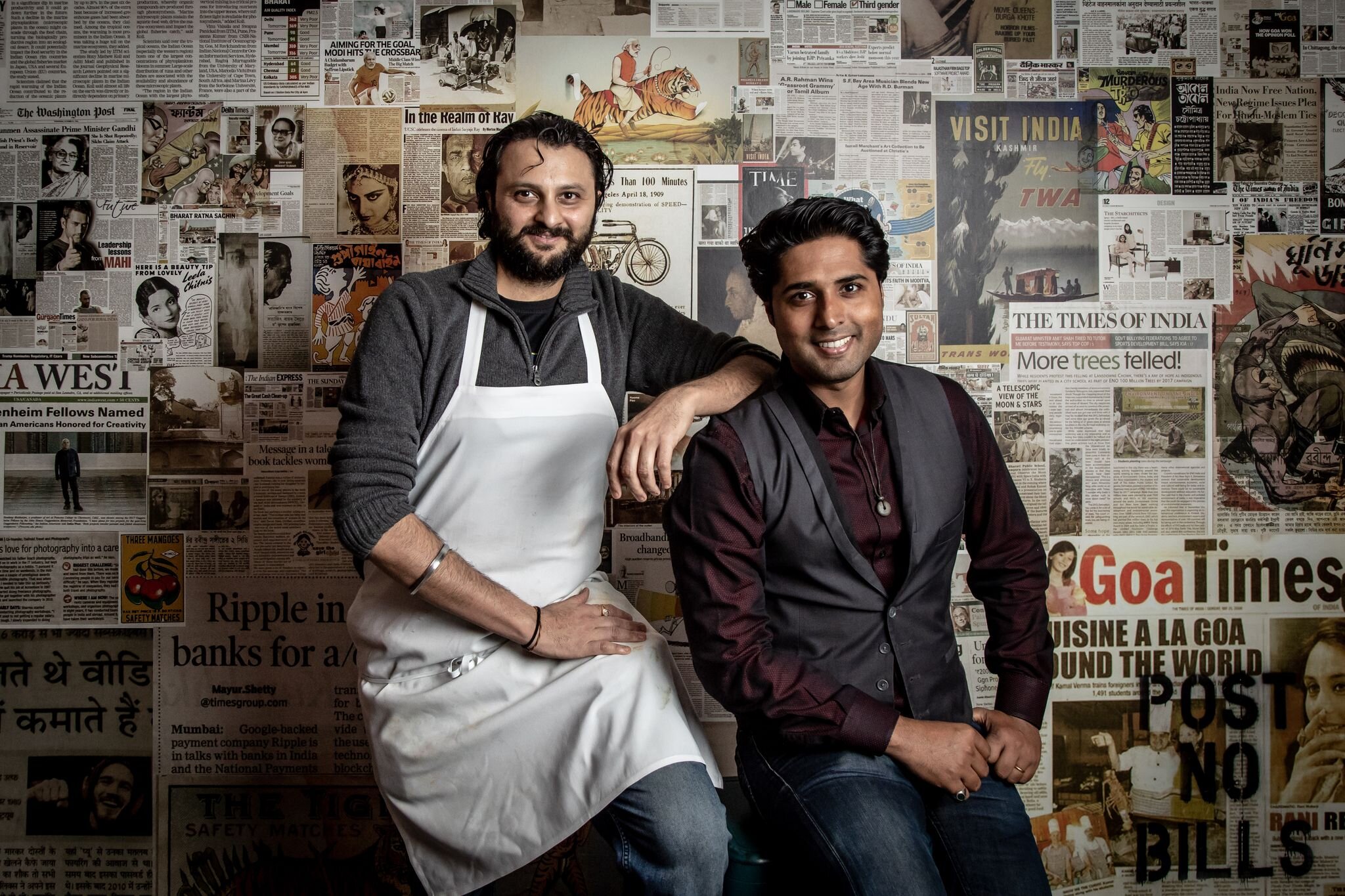Everything You Need to Know About Queens Hot Spot Adda’s Spiced, Fried Goat Brains
Kat Odell
The dream team duo of restaurateur Roni Mazumdar and chef Chintan Pandya (formerly of Flatiron’s Michelin-starred Junoon) has seen tremendous success, offering New Yorkers an updated taste on Indian cuisine beyond chicken tikka masala. In 2018, just a year and a half after debuting their first restaurant, Rahi––an ode to modern Indian cuisine––in Greenwich Village, they expanded out to Queens’ Long Island City, introducing Adda Indian Canteen: a playful eatery offering Pandya’s twist on Indian classics and old family recipes. And right off the bat, just two months into service, they earned a glowing two star review in The New York Times. After receiving much critical acclaim, the friends followed up this past winter with their third effort, Dhamaka, another Indian enterprise––this one on the Lower East Side–– plating a unique outlook on unsung regional dishes.
Photo Credit: Gary He, Chintan Pandya and Roni Mazumdar
As Mazumdar and Pandya continue to grow their hospitality group, Unapologetic Foods––an outfit responsible for the city’s most delicious take on a mango lassi spiked with acidic passionfruit juice, as well as dishes garnishes with fresh black truffle––they retain the thread of innovative and exciting Indian cuisine. Such as… brain.
On Adda’s opening menu, Pandya decided to serve bheja fry, a dish offered throughout India, sometimes as a street food, that’s especially popular in Mumbai and Hyderabad, made from goat, sheep, cow, or lamb brains sautéed with spicy masala. Depending on where the dish is made, some enrich it with almonds or pistachios. The idea is to scoop up the soft, spongy mixture with the aid of Indian bread, such as naan or roti.
Surprisingly, Pandya’s take on the dish has been so popular he hasn’t been able to take it off the menu. And, for a period of time, he was buying so much of it from Queens butchers that the price per pounds started to rise. Curious as to the dish and why he decided to serve it, we caught up with the chef to learn more.
First things first. Tell me about this goat brain dish. Bheja fry is a classic dish that is enjoyed widely all over India. Commonly made with lamb or sheep brain, this dish is also a delicacy in many places.
Why did you want to offer it here at Adda? Especially considering the fact that brains are not so common in the U.S. I grew up eating bheja fry on the streets of Mumbai and always felt it was a dish nobody wanted to cook in the U.S. That’s what motivated me to serve it, and also so I can savor it when I have a craving for it myself. The menu at Adda is literally what I like to eat and crave.
How have your customers reacted to it? The dish is quite popular. It was chosen as a favorite amongst restaurant critics and the public alike.
How is it made? The dish is made from a base of goat stock, chili, and ginger. The brains are flash-fried, simmered in the sauce, and served as a dip with toast for scooping on the side.
From where are the brains sourced? Various Indian butchers throughout Queens.
Do you ever run into sourcing issues? Initially it was easy enough to find. But, after people started writing about it, there was a shortage in the market, as other Indian restaurants started serving it. I still remember the first time I paid $4.99 per pound, and within months the price reached $12.99 a pound.
Wow, so you actually drove the price of brains up in Queens! And how does this dish fit into your overall menu at Adda? The restaurant offers regional Indian cuisine focusing on the foods of Mumbai where I am from, but the menu has other regional influences as well. This is a dish that’s offered all over India.
Tell me about some other regional dishes you offer. Pao bhaji from the state of Maharashtra. Pao bhaji is a fast food dish consisting of a thick vegetable curry (bhaji) served with a soft bread roll (pao).
What are some other dishes that best represent Adda? Vada pav, a dish that consists of a deep-fried potato dumpling placed inside a bread bun (pav), sliced in half through the middle. It is generally accompanied with one or more chutneys and a green chili pepper. Although it originated as affordable street food in Mumbai, it is now served in food stalls and restaurants across India. The version I make incorporates spiced potatoes, turmeric, garlic chutney. Another dish that represents Adda is lucknow dum biryani or slow-cooked goat, which is mixed with basmati rice and flavored with saffron. Both the basmati and saffron show off the beauty of Adda, while demonstrating India’s richness in flavor.



